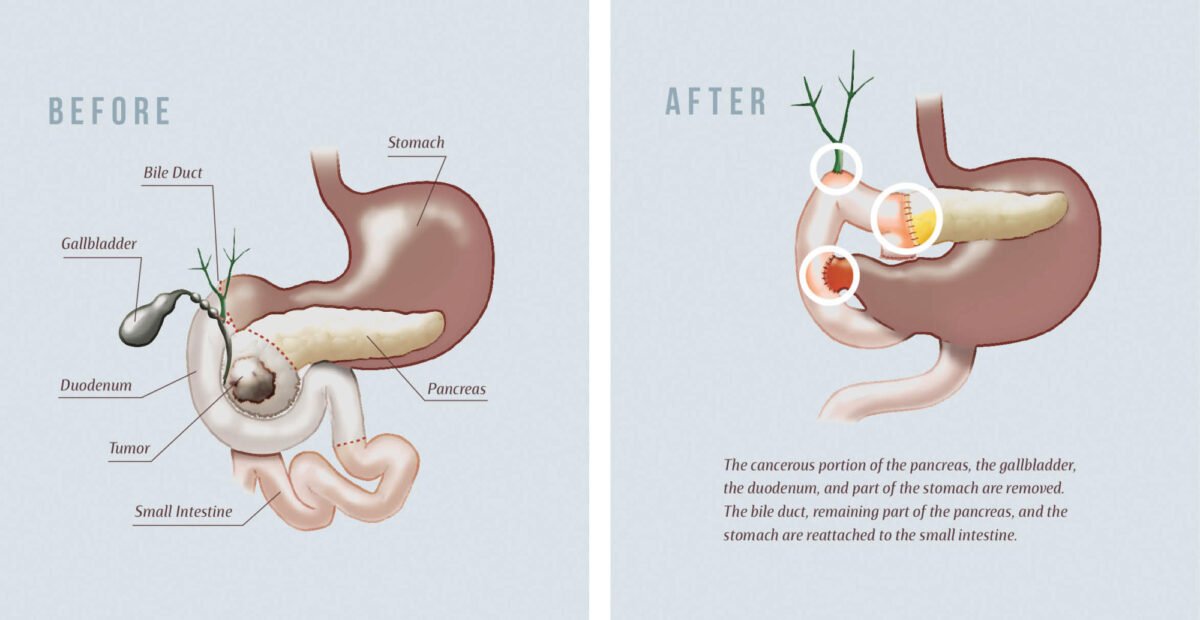What is the Success Rate of Minimally Invasive Surgery in Treating Pancreatic Cancer?

Globally, pancreatic cancer presents a formidable challenge, with a substantial number of diagnoses annually. However, the use of minimally invasive surgery (MIS) in pancreatic cancer treatment is a significant step towards better results and patient experiences.
Recent trends indicate a shift towards MIS, offering patients a less invasive yet effective alternative. With approximately 5 lakh new cases reported each year, a growing number of individuals opt for MIS, drawn by its promising success rates of around 80%.
In this blog, let’s understand how minimally invasive surgery (MIS) effectively treats pancreatic cancer.
What Is Minimally Invasive Surgery?
Minimally Invasive Surgery (MIS) is a medical technique using small incisions and special tools, like a tiny camera, to perform procedures inside the body. Unlike traditional open surgery, MIS causes less damage to surrounding tissues, resulting in quicker recovery and less pain.
It’s like fixing things with smaller, precise tools instead of making a big opening. MIS is often used for various surgeries, offering patients a less invasive option with fewer complications.
Dr. Deep Goel is known for his Minimally Invasive Surgery (MIS) expertise. He uses small incisions and special tools to make surgeries easier on the body. Dr. Goel’s skills in MIS have helped many patients, especially those needing complex procedures like pancreatic surgery, with faster recovery and less discomfort.
How Effectively Can Minimally Invasive Surgery Treat Pancreatic Cancer?
Minimally Invasive Surgery (MIS) for pancreatic cancer demonstrates a promising success rate, averaging around 80%. This cutting-edge approach utilizes small incisions and specialized tools to minimize the impact on the body.
Patients undergoing MIS often benefit from quicker recovery times, reduced postoperative pain, and a shorter hospital stay compared to traditional open surgery. The global adoption of MIS underscores its positive impact on treating pancreatic cancer, offering patients a more efficient and less invasive option for improved outcomes and a better overall experience.
Dr. Deep Goel shares, “Minimally Invasive Surgery (MIS) has truly transformed how we heal. MIS has been a boon for patients, making surgeries easier with quicker recovery, less pain, and shorter hospital stays. As technology gets better, so does its success rate. We’re seeing more smiles and fewer struggles, a testament to the simplicity and effectiveness of MIS in improving the lives of those seeking surgical care.”
Is Minimally Invasive Surgery Successful for Pancreatic Cancer?
The success rate of Minimally Invasive Surgery (MIS) in treating Pancreatic Cancer varies but has shown promising outcomes. MIS techniques, such as laparoscopic and robotic procedures, aim to reduce postoperative complications and enhance recovery. Studies suggest that MIS can lead to shorter hospital stays, decreased pain, and a faster return to normal activities than traditional open surgery.
However, success depends on factors like the stage of cancer, the patient’s overall health, and the surgeon’s expertise. While MIS represents a valuable approach, outcomes may vary, and a comprehensive evaluation of individual cases is crucial to determine its effectiveness in Pancreatic Cancer treatment.
What Factors Influence the Success Rates?
Several crucial factors influence success rates in minimally invasive surgery (MIS) for pancreatic cancer:
- Tumor Size and Location: Success rates often correlate with the size and location of the pancreatic tumor. Smaller tumors and those in more accessible areas tend to have higher success rates with minimally invasive approaches.
- Stage of Cancer: Early-stage pancreatic cancer cases generally exhibit higher success rates with minimally invasive surgery. However, advancements in technology and surgical techniques are expanding the applicability of MIS to more advanced stages.
- Surgeon Expertise: The proficiency of the surgical team significantly impacts success rates. Surgeons experienced in minimally invasive techniques tend to achieve better outcomes. Therefore, selecting a skilled surgeon is crucial.
- Patient Health and Fitness: The overall health and fitness of the patient play a pivotal role. Patients in good health with no significant comorbidities often experience better success rates with minimally invasive procedures.
Sarah M. – Mumbai, India
“After undergoing Minimally Invasive Surgery for pancreatic cancer with Dr. Deep Goel, I am amazed at the quick recovery and minimal discomfort. The personalized care and advanced techniques made all the difference. Grateful for a surgeon who prioritizes patient well-being!”
Rajesh K. – Delhi, India, shares, “Choosing Minimally Invasive Surgery for pancreatic cancer was the right decision. Dr. Goel’s expertise ensured a smooth experience, and I recovered faster than expected. MIS truly changed the game for me: Less pain, shorter hospital stay.”
What Is The Cost Of Minimally Invasive Surgery (MIS) For Pancreatic Cancer In India?
The cost of Minimally Invasive Surgery (MIS) for Pancreatic Cancer in India varies depending on hospital facilities, surgeon experience, medical equipment, and location. Below is an approximate breakdown:
- Hospital facilities range from $8,000 to $15,000 (₹6,00,000 – ₹11,00,000)
- Surgeon expertise ranges from $5,000 to $12,000 (about ₹4,00,000 – ₹9,000,000)
- Medical equipment costs $2,000-$5,000 (₹1,50,000-₹4,00,000)
Additionally, the expenses may differ based on the city or area, the facility, and the surgeon’s experience. Note that premium facilities and highly trained surgeons may carry more significant costs. Therefore, patients should communicate with healthcare providers to get personalized cost estimates based on their circumstances.
Conclusion
The success rates of minimally invasive surgery in treating pancreatic cancer are promising and steadily increasing. The global statistics and real-world success stories highlight the positive impact of MIS on patient outcomes. As research and technology progress, we anticipate further improvements in success rates, offering renewed hope to individuals facing the challenges of pancreatic cancer.
FAQs
- What are the potential complications of Minimally Invasive Surgery?
MIS generally has fewer complications than traditional surgery, but risks may include infection, bleeding, or injury to nearby organs.
- Can all pancreatic cancer patients undergo Minimally Invasive Surgery?
Not all cases are suitable. Factors like tumor size, location, and patient health determine eligibility. Consultation with a healthcare professional is essential.
- How long does it take to recover from Minimally Invasive Surgery for pancreatic cancer?
Recovery times vary, but MIS often allows for a quicker recovery compared to traditional open surgery. Individual recovery depends on factors like overall health.
- Are there long-term benefits to choosing Minimally Invasive Surgery for pancreatic cancer?
Yes, patients often experience reduced postoperative pain, shorter hospital stays, and a faster return to normal activities.
- Are there any advancements in Minimally Invasive Surgery technology for pancreatic cancer?
Yes, advancements in robotics and imaging techniques continue to enhance the precision and effectiveness of MIS procedures for pancreatic cancer treatment.
Read More : What Surgeries Are Common For Bile Duct Cancer?

